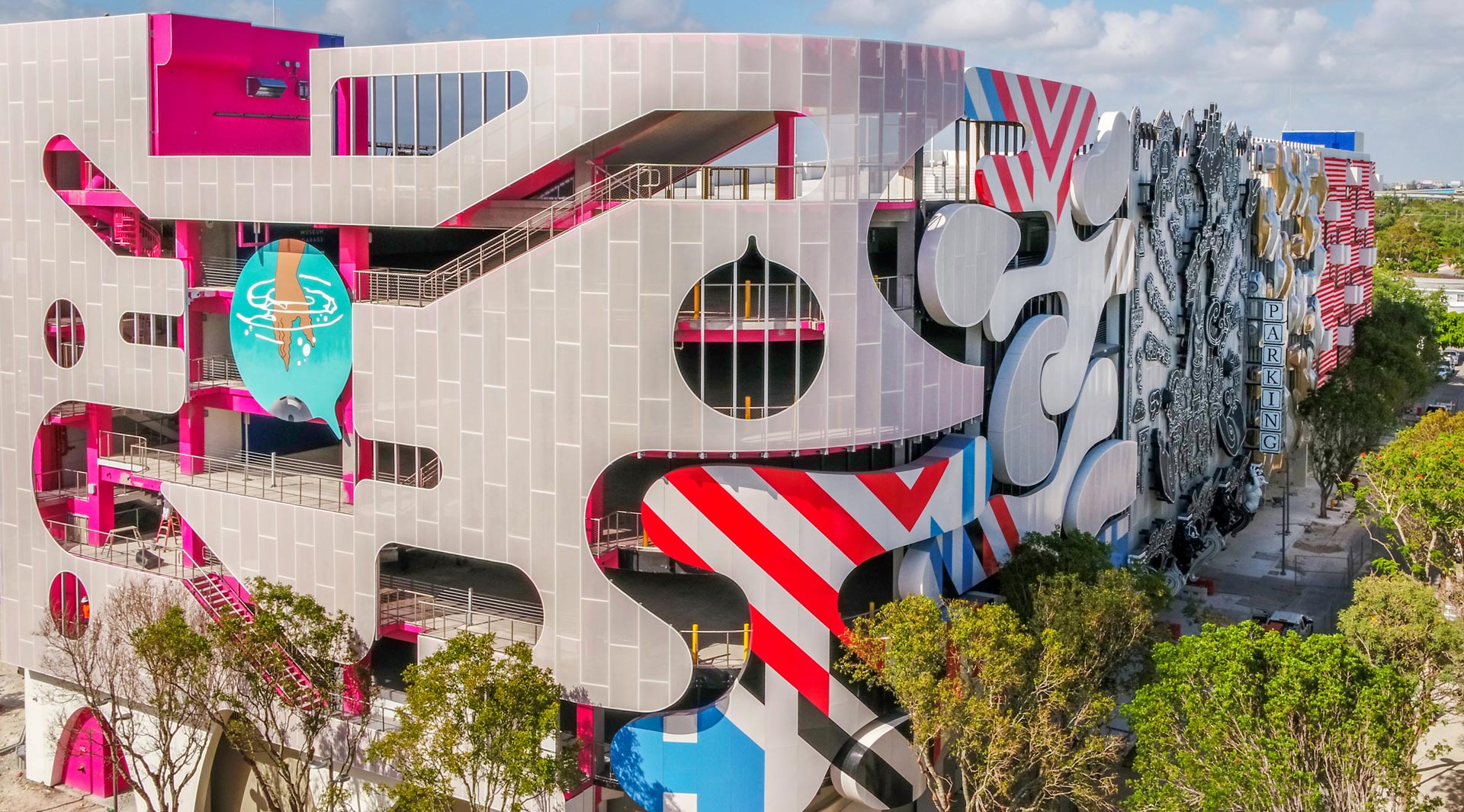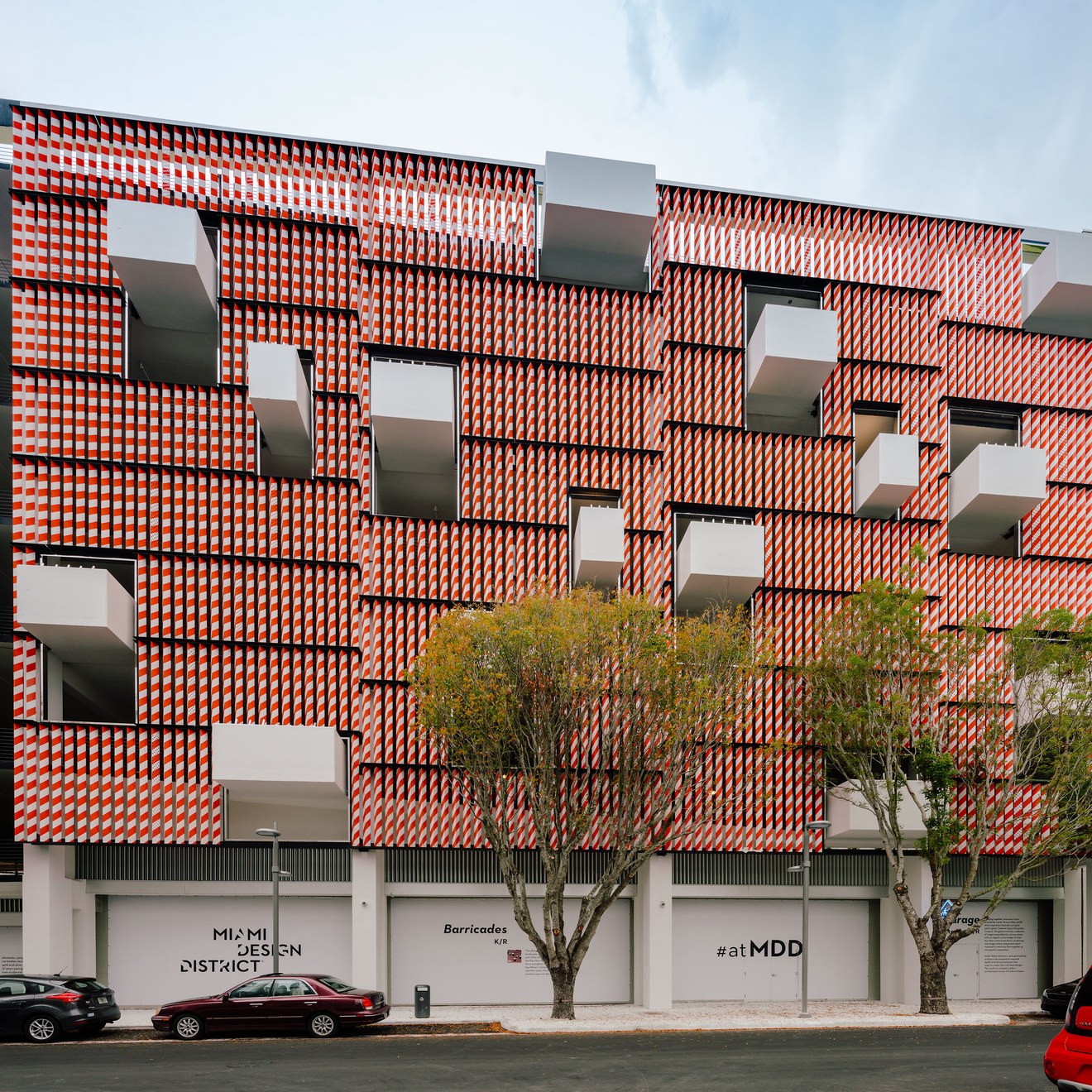Interview Magazine on Terence Riley
THIS SURREALIST-INSPIRED GARAGE IS THE NEW FOCAL POINT OF MIAMI’S DESIGN DISTRICT
When you think of art and culture in Miami, your mind might conjure the dancefloor sweepers of Pitbull (a.k.a. Mr. 305) or the rag tag of collectors and curators who flock to the city for Art Basel each December. But the latest creative project making Miami a destination is the last thing anyone could have predicted—a parking garage.
On Tuesday night, Museum Garage was unveiled to the public following a panel with the architects at the Institute of Contemporary Art in Miami, which is now a major focal point of the Miami Design District neighborhood. Museum Garage is a seven-story structure that can house up to 800 cars. Craig Robins, the CEO of Miami-based Dacra Development, commissioned Terence Riley, the former chief curator of architecture and design at MoMA to choose architects to design five very different façades and come up with an idea for the garage.
“Usually, the least attractive structure in a place is the parking garage but we’ve treated the parking structures in the neighborhood as real art and design opportunities,” Robins says. Along with four other international architects, including WORKac, J.MAYER.H., Clavel Arquitectos, and Nicolas Buffe, Riley also designed one of the façades with his firm Keenen/Riley. Riley spoke to a group of reporters at the ICA before the panel began and revealed that parking garages are some of the most heavily regulated structures; each designer had four feet of depth to work with to create their designs.
The architects faced not only a few regulations, but also a great deal of uncertainty. None of the artists and architects knew where they fit, or who they’d be placed next to, in the overall design of the building. Riley said he was inspired by Exquisite Corpse, a game that French surrealists used to play where one artist would add on to a drawing without knowing what the first artist had drawn. This concept was translated onto a 3D structure with Museum Garage, and it allowed each designer to work autonomously on their own projects.
Starting from the corner of NE 1st Avenue and NE 41st street is New York-based firm WORKac’s Ant Farm façade that also features a street art panel titled Dippin by New York artist Jamian Juliano-Villani. J.MAYER.H.’s façade XOX meets the edge of Ant Farm almost as though they are interlocking puzzle pieces. French artist Nicolas Buffe’s Serious Play comes next, which combines his passion for Japanese animation and video games with Rococo and Baroque architecture. Urban Jam, from the Spanish firm Clavel Arquitectos shows cars caught in a vertical traffic jam (the architect showed a clip from Inception as evidence of his inspiration). Finally, from Miami-based K/R is Barricades, which uses orange and white striped parts to allude to the construction and revitalization of Miami in the last decade.
Robins is the entrepreneur behind the revitalization of the Design District over the last several years and he uses art, architecture and design to mix the cultural and the commercial components of a neighborhood to add to the vibrancy of it. The District was originally the location of many furniture design showrooms and has evolved over the last decade into a more bustling neighborhood. It began with installations like Zaha Hadid’s Elastika (2005) or Mark Newson’s fence installed in 2006, and more recently installed works include pieces by the Bouroullec Brothers and Urs Fischer.
A walk around the District will reveal a string of luxury brand stores (Gucci, Hermès, and Tom Ford to name a few) one after another, spread across several square blocks. So who hangs out in the District? Is it just the valet parking, Fendi bag-buying crowd? In an interview with Robins at the gorgeous Dacra offices (also designed by Riley) he was quick to clarify the accessibility of the neighborhood: “The museums are free to the public. There’s great places that aren’t that expensive, like Blue Bottle Coffee to get a coffee. OTL is a great casual restaurant. Every Friday night Emilio Estefan produces a concert here that’s free to the public,” Robins says. “I think if you just corral people into something like a luxury ghetto, it’s boring for them. Even if younger people don’t have the same resources that hopefully they’ll have some day, they can still appreciate a cultural neighborhood as a place that’s like a laboratory for creativity.”
By the end of 2018, the District will open ten more restaurants and 20 to 30 more retail stores. There is talk of building a hotel in the area, giving an option to those who are more partial to the city than the beach. He also mentions that both the sales in the neighborhood as well as the cars parked have increased by 70 percent in the first quarter of 2018. So rest assured Museum Garage will be put to good use.


